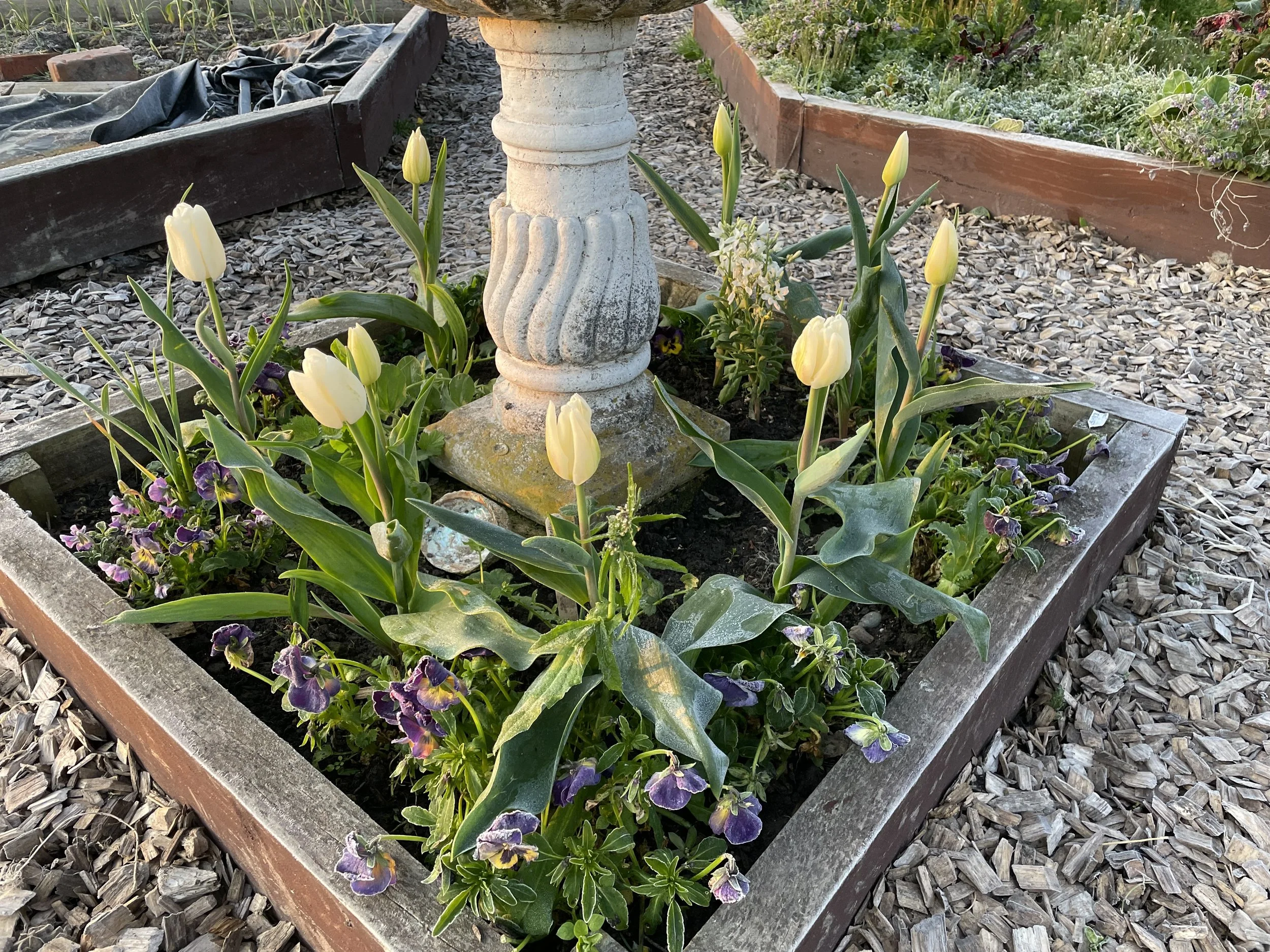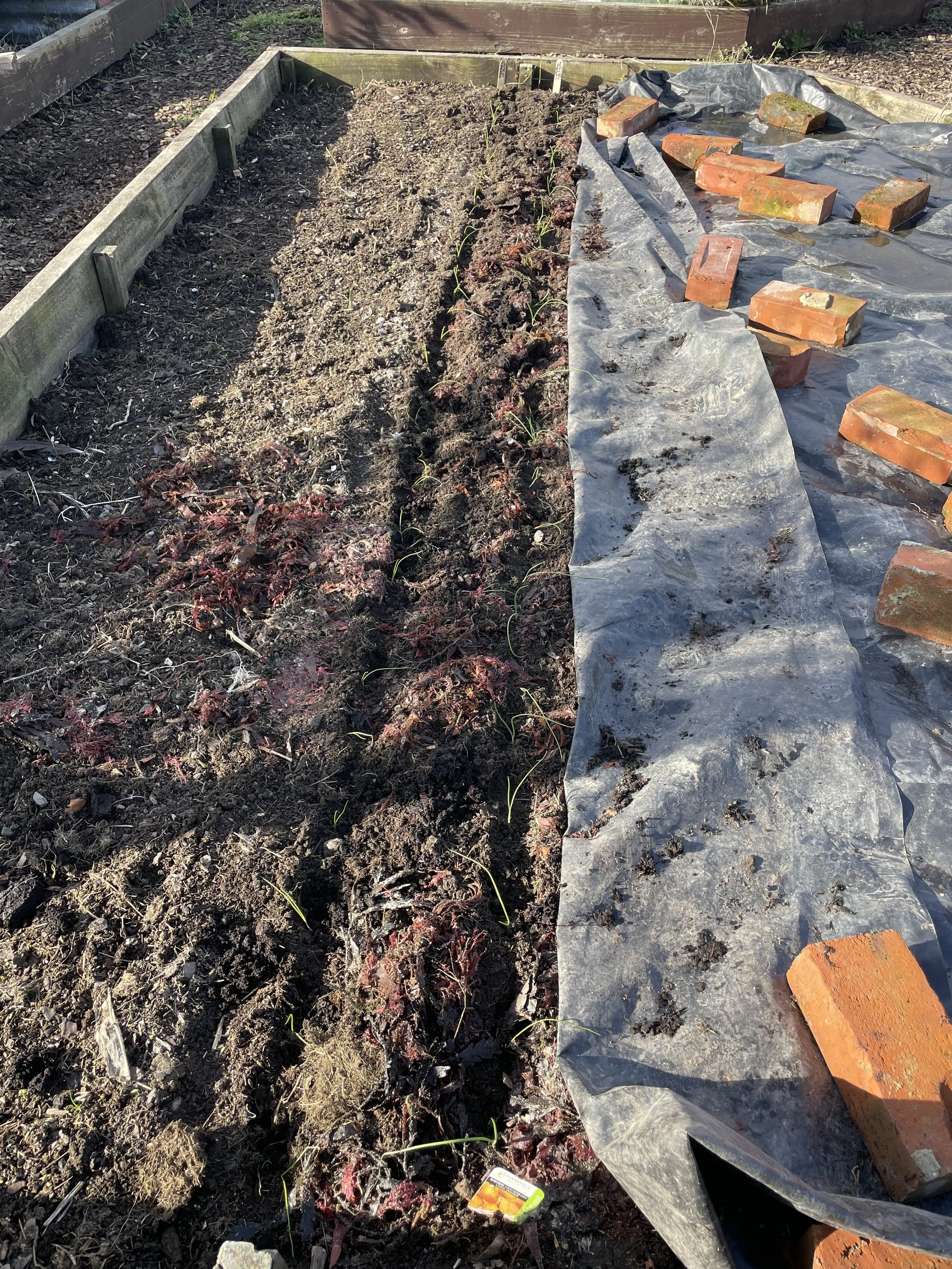October in the late spring family vegetable garden.
October is probably one of the busiest months of the year for the garden especially towards the end of the month with Labour weekend being the great traditional NZ planting weekend. If you are into sowing seeds then most things can be sown this month provided you have a warm place to start off the more tender ones such as tomatoes etc. As you sow your first lot of seeds, kick off your succession planting cycle by purchasing some punnets of well grown plants from your local garden centre or store and get them into the ground.
Succession planting is the practice of staggering your sowing or planting over the growing season. We do this for a number of reasons, but mainly so that you don’t have your crops all ripening at once. You want to avoid that in the family vegetable garden especially with crops you can’t store or preserve. A good rule of thumb is to sow or plant every 4-5 weeks or so. If you have raised plants in trays, sow the next lot of seed the same day you plant out your seedlings.
Succession sowing also ensures that If there is some kind of event that happens that wipes out your crop, then you have another sowing coming on. By that I mean that you might have a late frost that wipes out a crop or you (more likely for me) may have an invasion of the hen or sheep kind who all love the taste of your plants probably more than your kids do.
Crop Rotation Plan Roundup for this month.
My garden is now well into Year 2 on the crop rotation plan so all the Group 1 plants, the legumes plants such as peas and beans are in, or will be in, Bed 2. For me, this means I have broad beans sown last season (Autumn) in Bed 1 and broad beans sown this season (Spring) in Bed 2 – so there is a little bit of a cross over going on. Not for long though as the ones from last season will be harvested and then the plants dug in as a green crop. I have also already planted green leafy vegetables from Group 2 in the gaps in Bed 1 and will be planting more as soon as the beans have finished harvesting. The silverbeet, lettuces and brassicas will all be very happy with the nitrogen fixed by all those legumes.
Keep sowing peas in the cooler parts of the country and you can start to get in your French beans and runner beans once the soil is warm enough. Start off the seed indoors if it is still too cool in your region. The clue to the correct soil temperature is to look out for your perennial beans coming through, or any stray seedlings from last year’s crop popping up. Get dwarf and main crop beans in now too. If you have not already limed the beds then add a bit of lime now.
Bed 3 in my garden will have root crops in it from Group 4 on your Crop Rotation Plan. I’ve already got the garlic going well in the side bed so keep up with any weeding and liquid feeding. I also have onions in and they will be very interested in the lengthening days as most of the varieties we grow will only start to form bulbs once they detect the days are getting longer. One of the things that took me a while to get used to as a North Auckland transplant to coastal Otago, is the very long days we have in summer down here. So I can grow some of the varieties that prefer longer day length although I do tend to stick to good old Pukekohe long keeper for my brown onions. I love to see red onions gleaming in the ground so always have a succession sowing of those in.
The root crop bed is bit of a bed of 2 halves. The garlic and onions, celery and leeks (if you have them here) love plenty of compost and feeding. But the tap root crops such as carrots and parsnips don’t like bulky lumpy soil, nor do they like too much fertilizer -especially nitrogen-based ones as that tends to make them grow lots of greenery rather than the bit we want them to grow – the bit underground. That is why we add well rotted compost in autumn and let that all break down over winter. Dig over this part of the bed now if its not too wet and start succession sowing of carrots, parsnips, and beetroot.
Potatoes are counted as a root crop although I don’t often put them in my raised bed garden. I have another bulk growing garden out in the paddock for them although if you visited my garden now you will see that I have a row of early Cliffe Kidney potatoes in the legume bed. This is because I wanted to make sure I had some ready for Christmas and my big bed wasn’t ready for a September potato planting. There was was also a gap as I never plant all my beans at once and I can plant a late row of dwarf beans once the potatoes are harvested. Keep planting potatoes for the next few months if you have the room. You can never have too many as they will store well over winter.
October is the time for Group 3 plants – the ones that prefer warmer soils and temperatures. Labour Weekend at the end of the month is the traditional time for planting out tomatoes and its friends, capsicum, basil, chillies, auburgine, courgettes etc. Very exciting. There have been plants in the shops since mid September though which seems early, particularly for the south. So if warm enough, get these plants in and keep up the water and liquid feed.
Finally for this month’s round up, Group 2 leafy green vegetables which are in Bed 1 this year for me. I still have the winter growing crop in the previous bed which will tide us over the early spring gap and will purchase a punnet to go in the new bed. I also have celery, lettuce and lots of brassicas all growing well. As usual, keep up the weeding and feeding.
Perennial Beds.
You can still plant out asparagus and strawberries into your permanent beds. I replanted my strawberry bed over winter – lifting them all and removing perennial weeds such as dock and couch grass that had started to invade the plot. Gave the bed a good dose of compost and fertilizer and replanted. My asparagus bed not so much. Sadly the weeds have taken over so I will have to hunt for my new seasons spears and try to carefully weed around them.
Jobs for this Month
Sow: Peas, beetroot, swedes, turnips, lettuce, carrots, parsnips, parsley, broccoli, brussels sprouts, cabbage, cauli, leeks, silverbeet. Sow under cover in a warm space: tomatoes, capsicum, pumpkin, courgettes, cucumber, celery, sweet corn, beans
Plant: Punnets of brassicas, celery, peas, leeks, silverbeet, lettuce, potatoes, asparagus.
Cultivate: Keep any weeds at bay with regular hoeing and mulching. Liquid feed growing plants at least fortnightly especially your garlic crop.
Harvest: Broad beans, silverbeet, asparagus, lettuce etc
Remember that I do have a blank plan you can use to plan your garden each year if you are using the crop rotation poster which I can send to you if you email or message me with our email address. keren@professionalcountrywoman.com
And if you haven’t got your copy of the Crop Rotation Poster yet go here.


